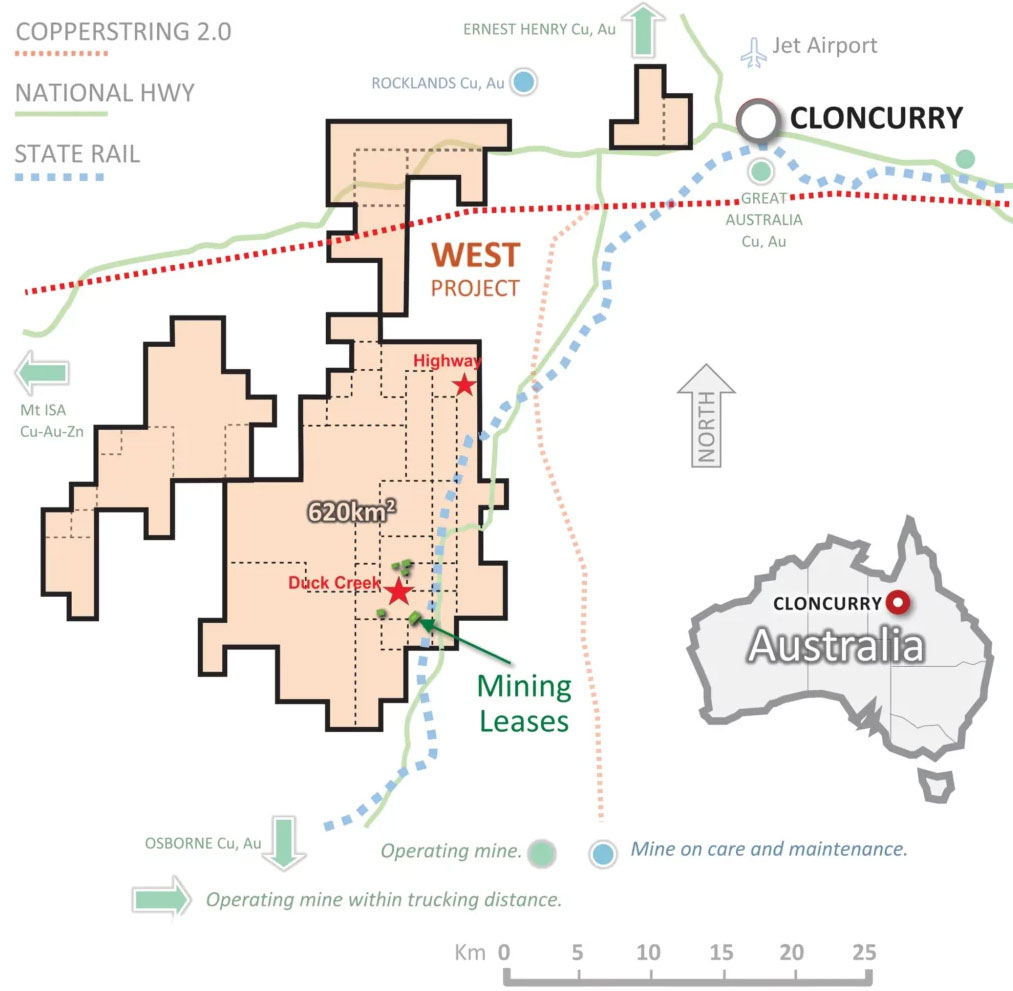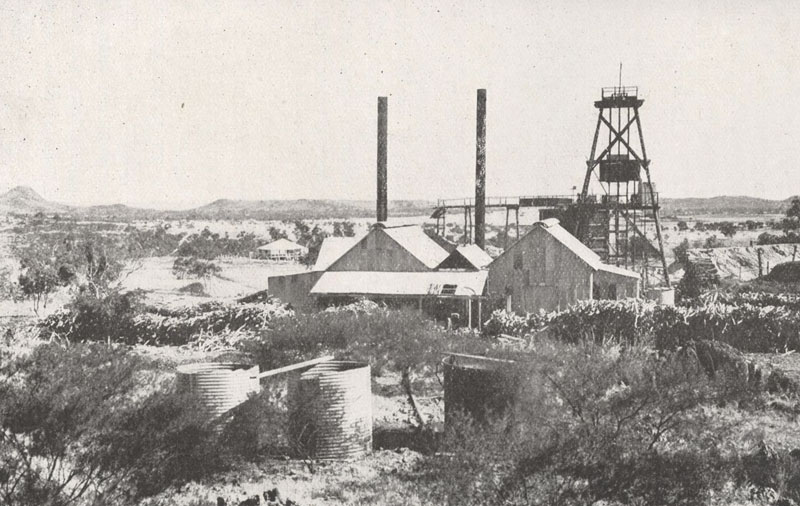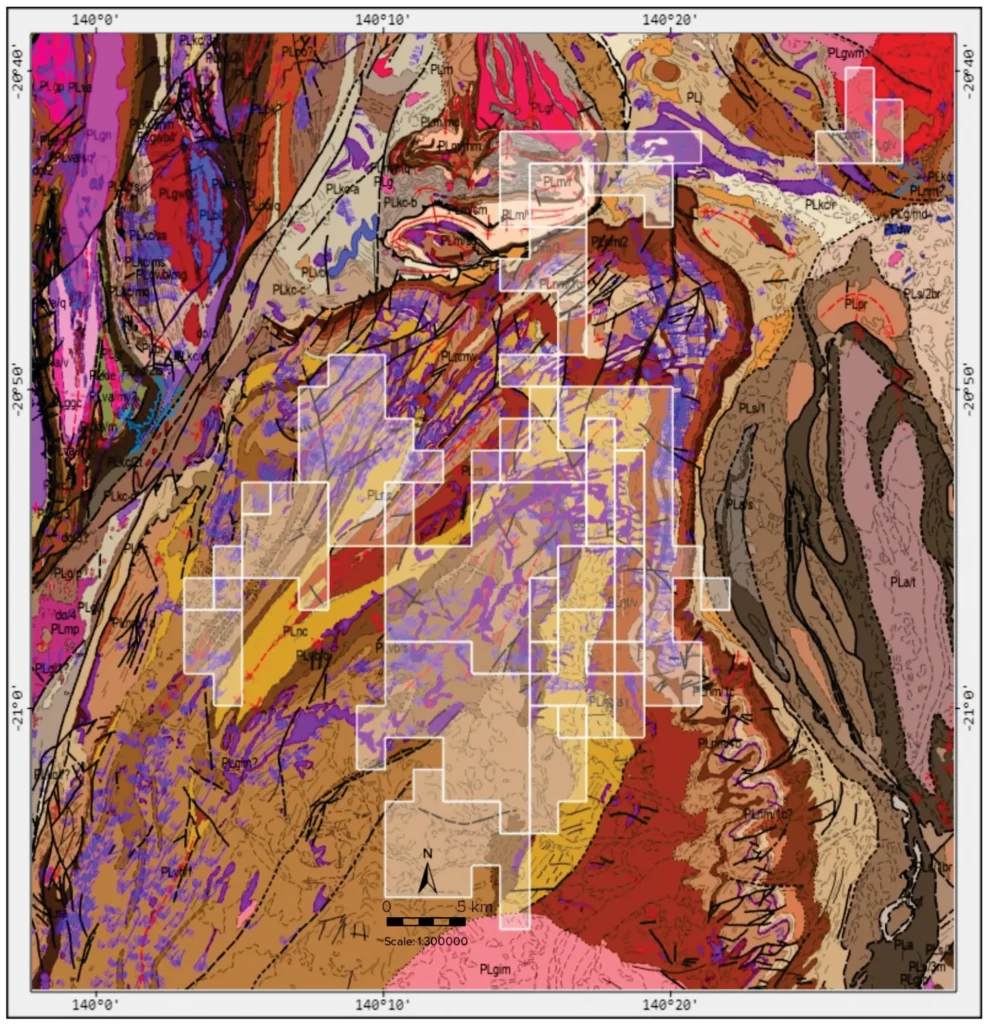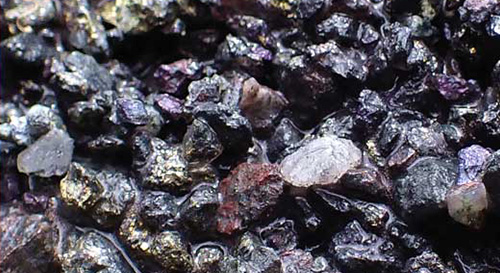The West Project tenements include Exploration Permits for Minerals (EPMs) Mining Leases (MLs), covering a combined area of 620km2 centered approximately 36km south‐west of Cloncurry. The project area can be accessed from Cloncurry by sealed roads, and the Townsville‐Mt Isa railway line runs through the project area with some 14.5km of the line within the EPMs.
The West Project Tenements hold the highest concentration of historical mines and workings on Transition’s tenements. With over 500 historical occurrences, this area within the Duck Creek Anticlinorium has drawn the focus of Transition’s exploration endeavors.
Both the Highway and Duck Creek Copper Projects are actively being explored and the scales of calculated Mineral Resource Estimates are anticipated to increase progressively.

The West Project area is dominated by the Duck Creek group of copper workings, which is a heavily worked area extending 20km north-south and 5km east-west. Mineralisation is characterized by narrow copper- oxide bearing quartz-rich structures that facilitated historical mining of high-grade lenses. Most mining occurred between 1879-1930, with sporadic mining in the 1940s and 1960-1970s.
The Duck Creek area includes sporadic, high-grade historical gold (+/-copper) ore production. Oxide weathering profiles continue to around 15m deep, from surface, encouraging small-scale historical mining activity that rarely reached depths of 20m, via narrow selective underground methods. Despite hundreds of surface copper workings, the area has not been drilled at depth.

Image: Cloncurry mine in the 1920’s
Transition’s West Project tenements are located within the Duck Creek Anticline, which formed during the Isan Orogeny. The core of the Mitakoodi Culmination comprises a suite of felsic alkaline volcanics that were previously identified as belonging to the Argylla Formation.
However, dating anomalies indicate these “Argylla Fm” volcanics represent a different suite of lithologies produced by a younger period of magmatism with an alkaline affinity in an intra-plate setting, possibly a back‐arc basin.
The Mitakoodi Domain was subsequently intruded by phases of the Wimberu Granite, which is associated with IOCG mineralisation.
The discovery of ~1755 Ma intraplate volcanics in the Mitakoodi Domain that are pre‐Burstall granite and Lunch Creek Gabbro in age, represent an earlier and previously unrecognized period of intraplate plume magmatism.
This has significant metallogenic implications because plume magmas are associated with mantle upwellings that rise from the core‐mantle boundary, a region of the Earth that is very enriched in precious metals, and effectively explains the source for the polymetallic suite of elements seen in the mineral system.
A mantle plume also provides an alternative theory of orogeny of the Bulonga & Duck Creek Anticlines as domes induced by a deep seated intrusive porphyry.


corp.admin@transitionresources.com.au
San Remo 3925, Victoria, Australia

Transition Resources Pty Ltd
(ABN 45 624 842 084)
corp.admin@transitionresources.com.au
San Remo 3925, Victoria, Australia

Transition Resources Pty Ltd
(ABN 45 624 842 084)
Copyright © 2023 Transition Resources Pty Ltd • transitionresources.com.au • all rights reserved
Coded by Dynamic Code